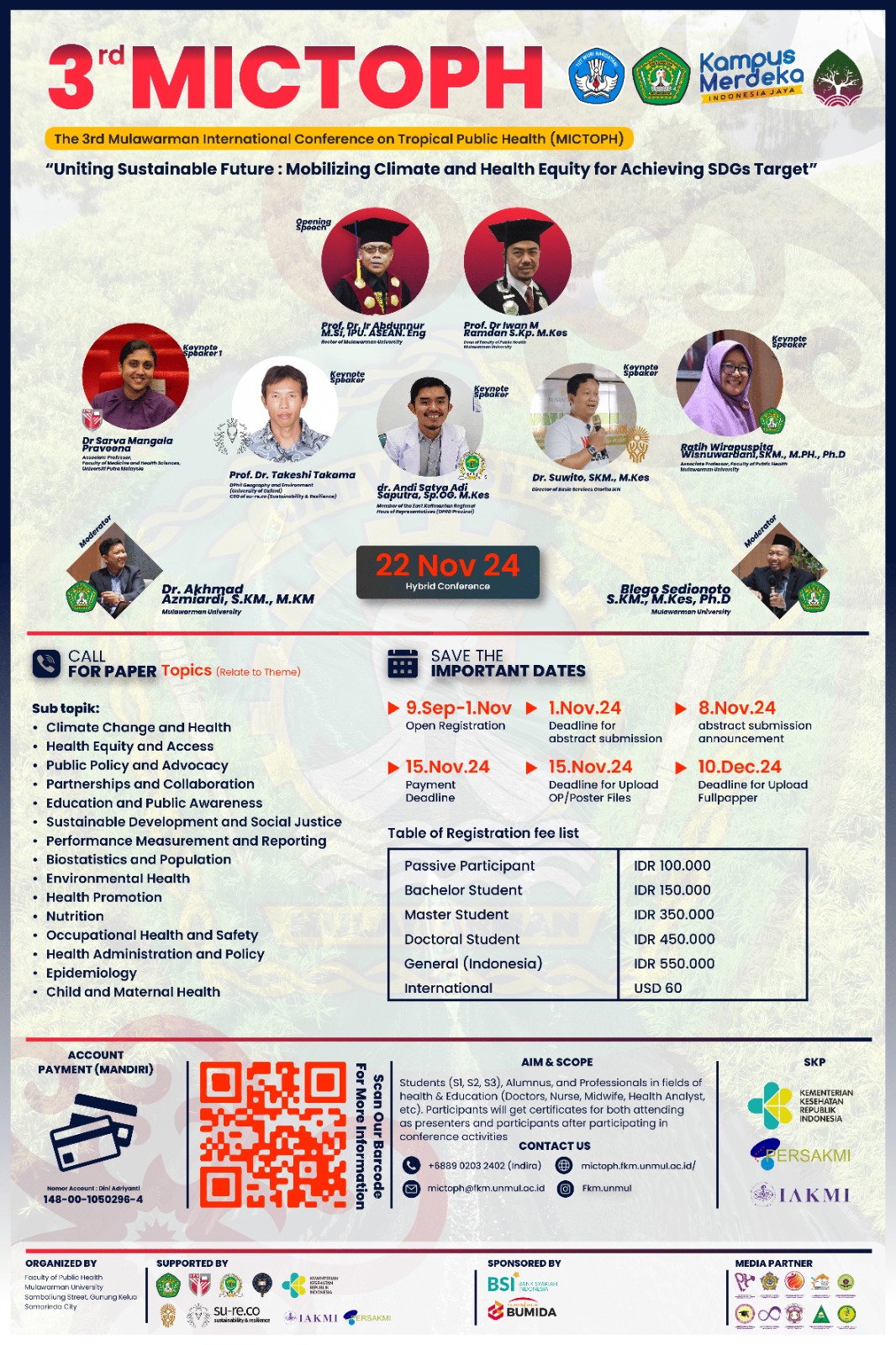Organoleptic Test and Proximate Analysis of Sonneratia ovata Mangrove Chips
Keywords:
Food Nutrition, Organoleptic Test, Mangrove Chips, Mangrove Fruit, Sonneratia ovataAbstract
Background : Sonneratia ovata, also known as pedada, offers multiple benefits such as providing a habitat for aquatic and terrestrial organisms, withstanding coastal erosion, and serving as a phytoremediator. Moreover, the economic potential of Sonneratia ovata is significant, as the nutritional value of pedada fruit can be utilized in products such as mangrove chips. The nutritional value and organoleptic properties of processed pedada fruit products still have limited available information. Objective : Thus, the purpose of this study was to determine the quality of Sonneratia ovata mangrove chips both nutritional value and organoleptic. Research Methods/ Implementation Methods : There was 30 untrained panelists involve in organoleptic test, meanwhile for proximate analysis using SNI and conducted in CDAST Laboratory of Jember University. Results : The raw materials for pedada fruit and mangrove chips showed an average value of 8 that met the minimal standards set of organoleptic test by SNI. Additionally, the result of proximate analysis there were 1 parameters that exceeded the threshold, which accounts for fat contents (40.02 ± 0.03) while for protein (8.27 ± 0.02%), ash contents (3.13 ± 0.01%), water content (0.2 ± 0.01%) already met the SNI requirements. Otherwise, mangrove chips are also rich in antioxidants. It was found that the total saponin content was 0.6% and the total flavonoid content was 2.6154 mgQE/g in mangrove chips. Conclusion/Lesson Learned : Mangrove chips made from pedada fruit can be used as alternative food processing product that made from local food. This product contain high nutritional value and has prominent quality of organoleptic test’s score.





